- News
- Reviews
- Bikes
- Components
- Bar tape & grips
- Bottom brackets
- Brake & gear cables
- Brake & STI levers
- Brake pads & spares
- Brakes
- Cassettes & freewheels
- Chains
- Chainsets & chainrings
- Derailleurs - front
- Derailleurs - rear
- Forks
- Gear levers & shifters
- Groupsets
- Handlebars & extensions
- Headsets
- Hubs
- Inner tubes
- Pedals
- Quick releases & skewers
- Saddles
- Seatposts
- Stems
- Wheels
- Tyres
- Tubeless valves
- Accessories
- Accessories - misc
- Computer mounts
- Bags
- Bar ends
- Bike bags & cases
- Bottle cages
- Bottles
- Cameras
- Car racks
- Child seats
- Computers
- Glasses
- GPS units
- Helmets
- Lights - front
- Lights - rear
- Lights - sets
- Locks
- Mirrors
- Mudguards
- Racks
- Pumps & CO2 inflators
- Puncture kits
- Reflectives
- Smart watches
- Stands and racks
- Trailers
- Clothing
- Health, fitness and nutrition
- Tools and workshop
- Miscellaneous
- Buyers Guides
- Features
- Forum
- Recommends
- Podcast
Everything you need to know about bike cameras — how to choose, tips for recording quality footage and what to do if you capture a near miss, close pass or collision
Let’s face it: the standard of driving in the UK is NOT the best. Anyone who’s spent any time on a bike on British roads will have some tales to tell about close passes, and worse. road.cc’s long-running Near Miss of the Day series is up to nearly a thousand videos now, and if we published every one we get sent we’d be into five figures.
More and more people are recording their rides, and most police forces run web portals for you to submit your footage of poor driving and bad behaviour. The head of road safety at Nextbase — the dash cam manufacturer that runs the National Dash Cam Safety Portal used by many police forces — revealed that submissions had increased by 25 per cent since the Highway Code changes of January 2022. If you want to help make the roads safer for everyone by reporting bad driving, here’s our handy guide to the types of cameras you can get, how and where to fit them, and what to do with your footage if you need to report an incident.
Types of cameras
We’re not worried about making cinematic epics here: an on-bike camera’s job is to provide evidence of a close pass or other incident, and to capture the number plates of the vehicles involved. There are many different cameras that can achieve that. We’ve reviewed a stack of them.
Action cameras
The first type of camera you could consider is an action camera, of which the GoPro is the most well-known. Cameras like the GoPro and DJI Osmo Action are expensive, and useful for much more than dashcam duties. But the internet is full of cheap action cameras and a lot of them are pretty good: fifty quid will buy you one that’ll shoot a decent picture in 4K resolution; check the usual online outlets. You can get an absolutely enormous array of mounts for them too, and many of them are either waterproof out of the box or come with a waterproof enclosure, which is good news for UK commuting conditions. Any camera that you’re buying for this kind of purpose needs to support loop recording: this chops up the footage into shorter clips, and automatically deletes the oldest ones when you start running out of space on your SD card, so you don’t have to worry about file management.
The main downside of action cameras is battery life. Even a cheap one will last a normal town commute, but if you want to regularly record rides over an hour, they don’t really work as a solution.
360 cameras
Also in the action camera family are 360 cameras, Of which the Insta360 family are the best known; that’s what you’ll find on Jeremy Vine’s head. 360 cameras have a lens on both sides, and they can record everything that’s going on, all at once. You can frame the footage however you want after the fact, and that’s great for capturing incidents that a single-lens camera doesn’t pick up. The main downsides are that 360 cameras are pretty expensive, and battery life is, again, quite short. There’s also a fair bit of processing to be done to the video if you want to use it, you can’t just pull the files off and upload them
Dedicated bike cameras
Lastly, you can get a dedicated bike camera. You can get front-facing ones, like the Rider Recall one we recently reviewed, and rear-facing ones that are usually built into some kind of rear light, like the Cycliq Fly 6 Pro. You can get front light ones too. There are twin-camera systems as well, either with two separate cameras like the Innovv K6, or with both cameras built into the same unit, like the Techalogic DC-2.
Cameras like this tend to record by default in a loop format with the date and time overlaid on the footage, which is useful if you’re submitting it to the police. They often have sensors to detect an impact too, and they can protect any footage they think is associated with an incident by locking the file and putting it in a different folder on the SD card. Many of them, the Rider Recall included, can also run from an external battery for much longer run times. The footage isn’t generally as good as a posh action camera, but for recording incidents out on your rides, it’s good enough.
Where to mount your camera
You can either have your camera on your bike or on yourself, normally on your helmet. Some cameras will only work in one place: a rear light camera goes on your seatpost, a 360 camera or a dual lens camera needs a clear view all round and so it really needs to be on your head. With others you get a choice. An action cam can go anywhere: bars, seatpost, helmet, even on a chest mount. But which approach is best? Well, there are advantages to both.
On your bike the camera is out of the way, and it’s less obvious to drivers, some of whom can get a bit worked up if they think they’ve been filmed doing something daft. If you’re using an external battery for long rides then a bike mounted camera is much easier to set up that way, you can just run the wires along the frame to whatever bag you’re using.
One of the main downsides of mounting your camera on the bike is camera shake. A good action camera will have excellent image stabilisation, but many bike cams have basic stabilisation, or none at all. Without it your bike will do a great job of transferring all the bumps and lumps of crappy UK road surfaces into your footage, which might make number plates hard to read. Having the camera on your head mitigates that quite a bit, and it also means you’re free to point the camera at anything you want, which can be useful. Say some idiot is nudging your bike at the lights: you can just turn round and film it. That doesn’t really work with a bar cam.
On the other hand, the ‘camera hat’ look might not be one you’re comfortable with, and it adds weight to your helmet which can make it less comfortable. There’s been plenty of time and column inches dedicated to discussing whether having a helmet-mounted camera is a safety concern; Michael Schumacher’s skiing crash in 2013 is the highest-profile case in which a camera has been implicated as a factor in a head injury. Independent testing suggests that it’s not really an issue though.
How can you submit video footage to your police force?
In short, it depends where the incident happened. There are 45 territorial police forces operating across the United Kingdom, and their approaches to video evidence gathered by members of the public vary.
Late in 2017, the four police forces operating in Wales launched Operation Snap, unveiling a website that allows people to submit photographic and video evidence and providing a national standard.
And while many English forces — including Gloucestershire as of December — accept Operation Snap submissions, there is no standard operating across the United Kingdom as a whole. Other English forces accept submissions directly via their website or through Nextbase who have a handy interactive map showing how to report to your force.
Police Scotland announced funding for a new National Dashcam Safety Portal in 2022, but the yet to be rolled-out scheme has since been under review and could be axed, prompting a campaign from Cycling UK to save it. Submissions from Scotland presently should go through the Police Scotland Online Reporting Form, similarly in Northern Ireland you can go through the non-emergency online incident reporting.
So, wherever you live, if you are using a camera to film your ride, familiarise yourself with your local police force's policy regarding photographic and video evidence provided by the public. Also bear in mind, too, that the roads you ride on may be part of another force's territory.
Our top tips for capturing and submitting footage
You’ll need good enough footage.
Police don’t specify video quality for submission but in any incident the vehicle number plate needs to be clear. Check your camera can pick up moving number plates. In the case of close passes, the most effective setup is one camera on the front, one on the rear of the bike. It’s worth noting cameras mounted to helmets make it trickier, but not impossible, for police to tell how close drivers are when overtaking.
Ensure the time and date are correct on your camera.
Footage with the date and time overlaid is very helpful, as long as they're correct! This can be resolved later, usually with a statement from the user, but it’s easier for police if it’s right in the first place.
Capture video footage of the incident and the vehicle as best you can.
Capturing not only the incident and the vehicle, but images of the driver, too will help police identify them later on. More tips on mobile phones, below.
Record, Retreat, Report
Keep cool during the incident, and above all, don’t put yourself in danger. Don't enter into discussions or engage with the offending driver to point out what they have done and what you intend to do; obtain the footage and carry on your journey. Remember, it’s up to police to deal with bad driving, and camera evidence helps them do that. Police will assess both your riding and a driver’s driving later. we've seen cases where riders have been assaulted by motorists after remonstrating with them, which can also in rare cases lead to police rejecting footage, or even referring the cyclist for prosecution for a public order offence.
If there are witnesses, get details
As with any road traffic incident, whether caught on film or not, having independent witnesses is very helpful, and is even required by some forces. Get the full name and contact details for anyone who witnessed the incident.
Submit footage early – worry about details later.
Police need to send a notice of intended prosecution to vehicle owners within 14 days of the incident, so if you’ve caught something on camera there isn’t a day to waste. Make sure to keep the full footage in case it’s needed later.
Write a good statement with your camera footage
Your statement is submitted at the same time as the footage. Keep to the facts, rather than opinion. Your statement needs to cover the following:
a. What the driver did
b. Whether they were moving/stationary at the time
c. If they were in traffic
d. Whether it was at a junction
e. What the road conditions were
Mobile phone offences need more detail of the driver and what they're doing
For mobile phone offences try to capture:
a. The device screen, if it is illuminated
b. If the device is being held to the driver’s face and they can be seen talking
c. Texting/fingers or thumb moving across the screen
d. Looking down at the device, rather than the road ahead – whether stationary or moving
e. The length of time the driver is using the device
Keep all of the footage you have of the incident.
Once submitted, police will consider the manner of driving and cycling of ALL involved in the incident, and may ask you for the full footage, should the matter proceed to court. They usually need the incident itself, and a minute of footage either side.
Is it worth the time and faff to actually report bad driving? Well, the numbers say yes: rates vary from force to force, but for all the forces that have published stats, over half of reported incidents (and sometimes a lot more) result in action of some kind. That can be a letter, a notice of intended prosecution, a fine, or a requirement to attend a course. The worst passes certainly do get prosecuted, so if you capture bad driving it *is* worth your time to report it. If you’re thinking of getting a camera, check out the road.cc camera reviews on the site.
Don't forget: Enjoy the ride!
We take up cycling because it’s convenient, fun, healthy and saves us money. Most drivers want to do the right thing and drive safely. Don’t let a few bad eggs ruin your rides.
Includes additional reporting by Laura Laker and Dave Atkinson
Dan is the road.cc news editor and joined in 2020 having previously written about nearly every other sport under the sun for the Express, and the weird and wonderful world of non-league football for The Non-League Paper. Dan has been at road.cc for four years and mainly writes news and tech articles as well as the occasional feature. He has hopefully kept you entertained on the live blog too.
Never fast enough to take things on the bike too seriously, when he's not working you'll find him exploring the south of England by two wheels at a leisurely weekend pace, or enjoying his favourite Scottish roads when visiting family. Sometimes he'll even load up the bags and ride up the whole way, he's a bit strange like that.
Latest Comments
- chrisonabike 3 sec ago
Agreed. A minor convenience to some (but not much use if I was on the recumbent)....
- Simon E 25 min 30 sec ago
And a handy way for arseholes to excuse their shitty behaviour....
- eburtthebike 58 min 40 sec ago
It was only a cyclist, I don't know what all the fuss is about....
- Bigtwin 1 hour 3 sec ago
Wonder if they could adapt it slightly to tell you when you should breathe?
- Bigtwin 1 hour 13 min ago
Amzing just how wrong one person can be. Congrats though - you've aced it.
- Bigtwin 1 hour 31 min ago
This is a full-on professional-level race bike that can be ridden by the masses. It's over eight and a half grand for godness' sakes! And where...
- bmxboyx01 3 hours 5 min ago
It has to be an organised group. My mate had his Canyon gravel bike with every single upgrade going on it. So many go each year, but the sleepy...
- Rapha Nadal 4 hours 21 min ago
I think I'm just going to go down half a size which should fix it.
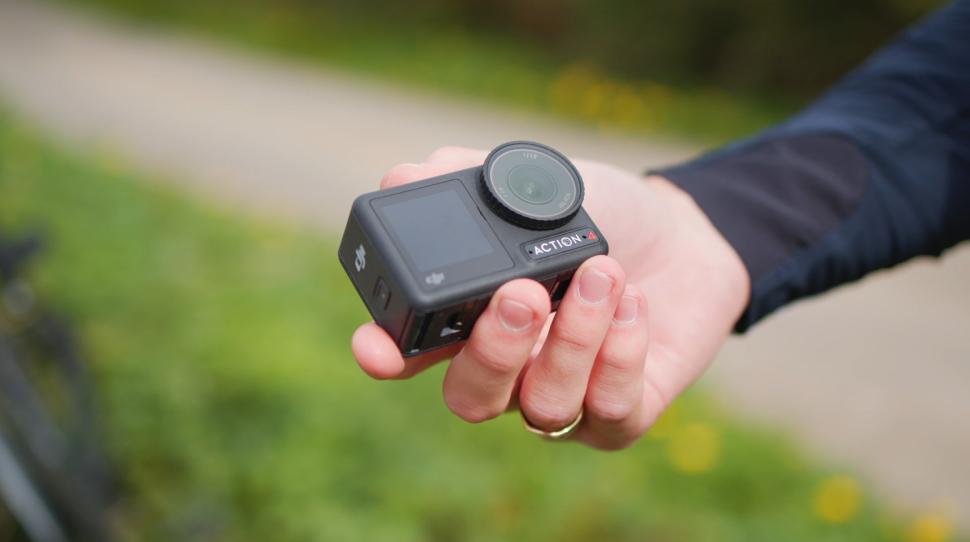
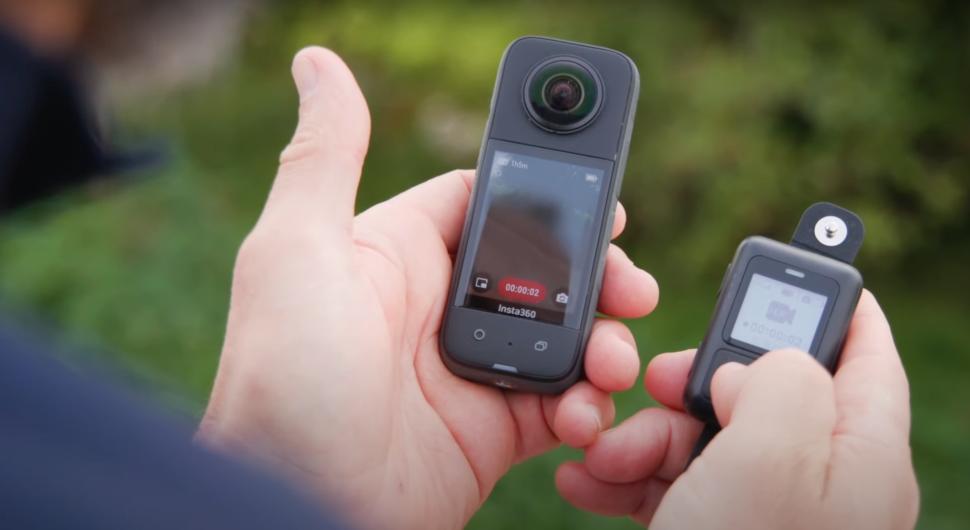

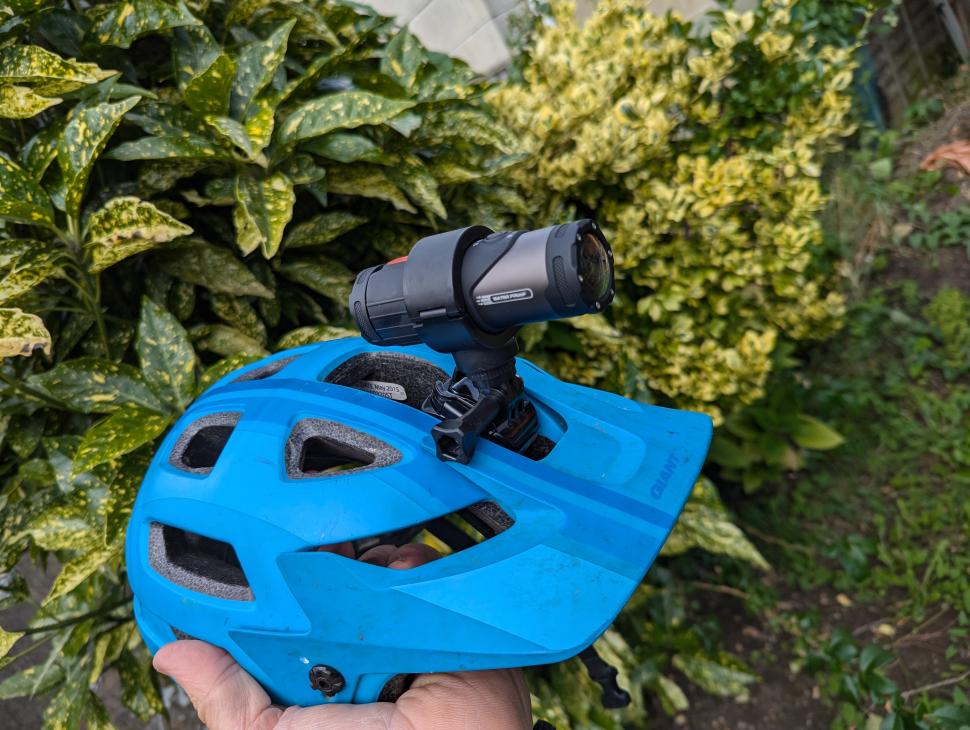
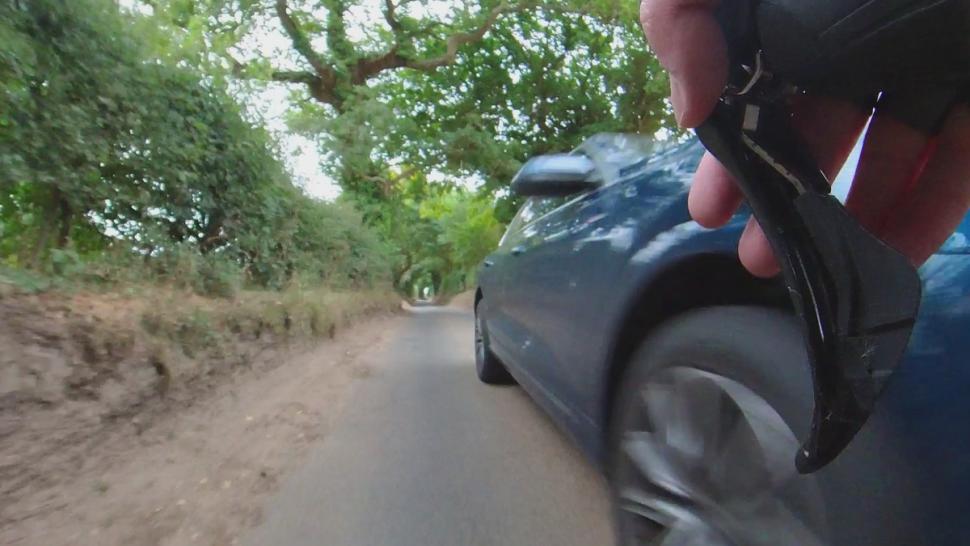
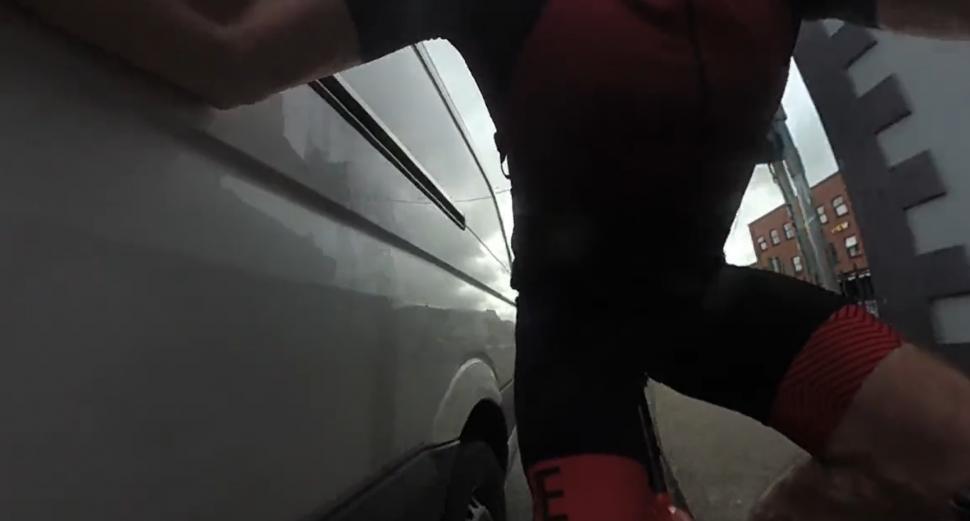
Add new comment
20 comments
Don't waste your money, if you ride in Surrey at least.
Unfortunately for cyclists, pedestrians, and even drivers, the first sentence is auto-blurt wrong! I worked in an intensive experiential cross-culture training centre in East London. We had trainees from all over Europe (mostly Finland, Germany, Netherlands, Switzerland) and some from USA. All were astonished at the standard and patience and consideration of UK drivers compared with their home countries. We Brits were very surprised to hear this over and over again and, as cyclist, I was astonished.
We do have psychopathic nutter drivers, but so do other countries.
Probably true to say we have among the least worst drivers.
All were astonished at the standard and patience and consideration of UK drivers compared with their home countries
I don't agree with this eulogy to UK drivers, but one minor advantage we have is that the selfish, inconsiderate, dangerous UK psycho-nutter drivers voluntarily self identify and segregate by the weapons they choose, which just happen to be the same as chosen by Lancashire Constabulary
https://upride.cc/incident/lc64tge_bmw_closepass/
https://upride.cc/incident/a15tjv_bmwm4_redlightpass/
https://upride.cc/incident/au06ynx_bmw3_closepass/
The usual explanation for BMWs with long term absence of MOT yet still with VED around here is unmarked police vehicle- but this one spends a lot of its time outside this house in Garstang.
That doesn't necessarily make the statement wrong. It could be that the standard of driving everywhere, including the UK, is not the best, if by 'the best' it means 'the best it could be'.
Think it's also we judge our by our own standards. Given UK infra so clearly signals "drivers, this space is for you" people maybe don't expect much! I'd guess the Dutch are more critical of poor behaviour towards cyclists by Dutch drivers, but in the UK they'd probably be grateful to be alive after having been directed down one of the UK's "urban motorways"...
Per new Met guidelines, it's best in London to turn off the date stamp, as if for any reason it's incorrect (which can happen if you run the camera battery completely flat, for example) then they won't process the report.
Time/date stamp is not necessary to file a report - every police force accepts reports without it, you just have to state the time/date and location.
Also - as a point of info - GoPros don't actually support loop recording of the type needed for reporting. Their 'loop recording' overwrites the most recent file - great for repeated attempts to e.g. pull off a perfect stunt, but the opposite of what you need for reporting.
So you just click the shutter to save the current loop at the time of an incident. I don't bother with looping anyway, with a 32GB SD card and 2h20m battery life the battery runs out long before card space does.
Really? I know the Met ask if there were any witnesses but I've never been told they wouldn't go ahead without one and I've never heard of any other force doing that either. "Required" implies that some forces will not proceed unless there is a witness independent of the cyclist and the camera, that surely can't be right?
Police Scotland have given me this as a reason for not proceeding with a report before.
That's bonkers. Was there anything special about that submission that could justify such a demand, e.g. you alleged something about the driver's behaviour that couldn't be seen or heard on your video, or was it just a flat "no witness no investigation" refusal?
FWIW, as I understand it Scots Law has some slightly different rules around "corroboration" of evidence, which does complicate matters when comparing across the border.
But even so, I don't think it's actually a valid argument for not proceeding with a report (see e.g. https://www.scottishlegal.com/articles/criminal-appeal-court-clarifies-corroborative-status-of-cctv-evidence)
You say keep it factual, but it is important I believe to include how the actions of the driver made you feel and affected you. As has been said by a police officer recently a close pass is not a specific offence so you need to provide additional evidence that the driving was inconsiderate. They will not assume how you felt, you have to tell them.
Good advice. I always report how frightened or shocked I was by the dangerous driving. I always try to swerve away from the vehicle if it's safe to do so and then report that I had to because of my fear of being hit.
I also list all the dangerous actions of the driver like undertaking or cutting up other vehicles, speeding past pedestrians waiting to cross or past a school and if the vehicle is not taxed or MOT'd. You can also check if it is insured but technically you're not allowed to unless you own the vehicle so it's best just to hint at this in the report and leave the police to check for themselves.
Yes I agree, I always put in the statement things like 'I feared for my life' and:
'The incident left me quite shaken up and the drivers impatience and manner of driving shocked me greatly.'
'That afternoon/evening when I returned home I still felt shocked and shaken and extremely frustrated by the dangerous manner of driving exhibited by the offending vehicle.'
'I did not sleep very well that night because of anxiety that this close pass induced and I kept going over the incident in my mind, trying to understand why anyone would drive in such a dangerous manner around a vulnerable road user.'
'This manoeuvre startled me because I was not expecting anyone to pass like this at this point and made me extremely tense and fearful for my safety.'
'The offending vehicle approached from behind and passed me extremely closely at speed on my right hand side, which I felt was very dangerous and put me at unnecessary risk and was so close, I could easily have touched the vehicle with my right hand.'
'Further down the road I had to stop and get of my bike for a while, because I was so distressed by the nature of the incident and the great danger I had experienced.'
'The unexpected manoeuvre with the vehicle passing me so closely at a much higher speed than me, made me jump and shout out in surprise and fear.'
I have used all of the above and variations of these, because this is genuinly how I have felt after some crazy close passes, don't be afraid to go into great detail, you don't want drivers taking it to court and getting off because it appears to the Magistrate it was a non event.
I have a few templates that i use depending on the nature of the incident, just changing details to suit what actually occured.
.
All good - many thanks. Going to copy and save those, for use in the future.
.
Ta.
.
Operation Snap in Wales is very good, at least in the south Wales and Gwent Police areas that I have submitted close pass reports to and as far as I am aware the rest of Wales is also good to report incidents through the portal.
Any queries I have asked have been responded to very promptly and I usually supply a minute either side of the incident after asking what would size video be best to submit.
In Wales you also have a useful map where all such incidents can be viewed. It does take a few months for any submissions to appear. A small portion of the map can be seen below.
Can you post a link, please?
Found it - the Op SNAP tab here:
https://www.gosafe.org/camera-map/
Yes that's it. It is a few months out of date at the moment as I have 5 close passes from August not on there yet.
In my experience, they will catch up eventually.
On this subject see my Review of "Record, Retreat, Report" here https://rdrf.org.uk/2024/08/26/review-record-retreat-report-by-lukasz-ma...
Thanks for this Robert.
I've made a comment on the review.